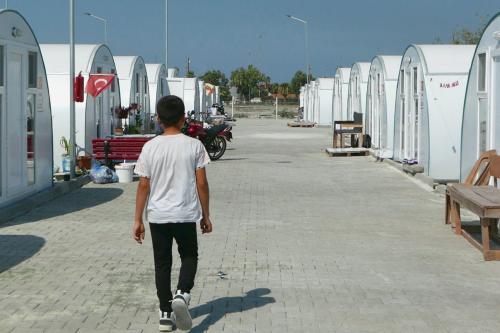At a conference in Marrakech, Morocco this week, 164 of the 193 members of the United Nations adopted the Global Compact for Safe, Orderly, and Regular Migration.
Negotiations to create the ambitious agreement began two years ago, but the Trump Administration withdrew at the end of 2017, declaring that the Compact would “undermine the sovereign right of the United States to enforce our immigration laws and secure our borders.” Australia and a group of Eastern European countries also opted out of the Compact.
Human rights organizations in the U.S. have generally been critical of the Trump administration’s decision to stay out of the Compact. Curiously, relatively few statements favoring or opposing the compact have emerged from prominent foreign policy experts in the United States. One reason for this silence may be that the Compact does not have the status of a treaty; it is not binding on countries that commit to it.
Another reason may be that it contains few teeth—few actions that countries must take beyond what they are already doing or before a specific deadline. A third reason could be overreach: as popular sentiment against migration increases, so too will the likelihood that the Compact will be ignored in the years ahead.
There are some decent arguments for limiting immigration without going to the xenophobic extreme of stopping immigration completely.
One argument is that the pace of migration in recent years has soared to levels that have made assimilation difficult. The situations of individual countries are widely different, of course. Some, like Japan, have aging and shrinking populations, although this does not automatically make them pro-immigration.
In fact, not a single country in the world today has an open door policy of the kind the U.S. had until the late 1800s. Since then, the United States has cycled through periods of pro-immigration sentiment and anti-immigration sentiment, with anti-sentiment currently peaking. Europe is experiencing the same phenomenon, driven by a surge of refugees out of Syria and other Middle Eastern countries in 2015, compounded by a steady flow out of Africa.
The most esoteric case against migration is economic: the impact on wages. Numerous studies have pointed to significant economy-wide benefits from migration, especially in the long term. But there are small negative impacts in the short term, especially in declining sectors of advanced economies, in the form of downward pressure on wages. The economic arguments are complex and therefore debatable. What is not debatable is the link between anti-migration sentiment and anti-globalization sentiment, although it is far from clear in which direction the relationship goes.
The most far-sighted argument for slower and politically sustainable migration is the impact of climate change. For those who believe climate change is an existential challenge for the human race, the most problematic impact of global warming will be the way it forces people out of regions suffering from chronic droughts and rising sea levels. The world seems to be losing the battle to avoid irreversible and catastrophic climate change, which means that migration pressures will intensify in the coming decades and threaten the well-being of people in less impacted countries. As a result, anti-migration could become much stronger and possibly lead to violence.
If the Global Compact on Migration is not the answer, what is?
In his address to the U.N. General Assembly on September 25, 2018, President Trump said, “Ultimately, the only long-term solution to the migration crisis is to help people build more hopeful futures in their home countries. Make their countries great again.”
He’s not the only person with this idea. Two distinguished Oxford University professors, Alexander Betts and Paul Collier, made the same point in a recent examination of Europe’s migration policy. One essential reform, they argue, is a politically sustainable immigration policy, a policy that “enjoys broad democratic support.” But they also argue that Europe has an obligation “to help poor countries develop.”
Betts and Collier point out that only 1-2 million jobs are created for the 10-12 million young Africans who enter the labor force every year. Thus, “emigration is the de facto solution to this employment gap.” What is needed is not more foreign aid, but investment to create “opportunities for meaningful work and entrepreneurship on the continent.” A similar approach will be needed to mitigate migration out of Latin America and the Middle East that is politically unsustainable in North America and Europe.
The Global Compact on Migration contains 23 distinct objectives and spells out 187 actions to achieve these objectives. This is overload. It is wishful thinking. Moreover, there is a companion Global Compact on Refugees due to be adopted by the U.N. General Assembly later this month that is equally likely to be ignored more than respected.
The treatment of migrants and refugees in the world today is clearly inadequate and in too many cases blatantly inhumane. A global strategy that is more focused on the drivers of unsustainable population movements is needed. If the member states of the United Nations are not able to agree on a global strategy, then regional approaches will offer the best chance of meeting the challenge.







Commentary
The Global Compact on Migration: Dead on arrival?
December 12, 2018